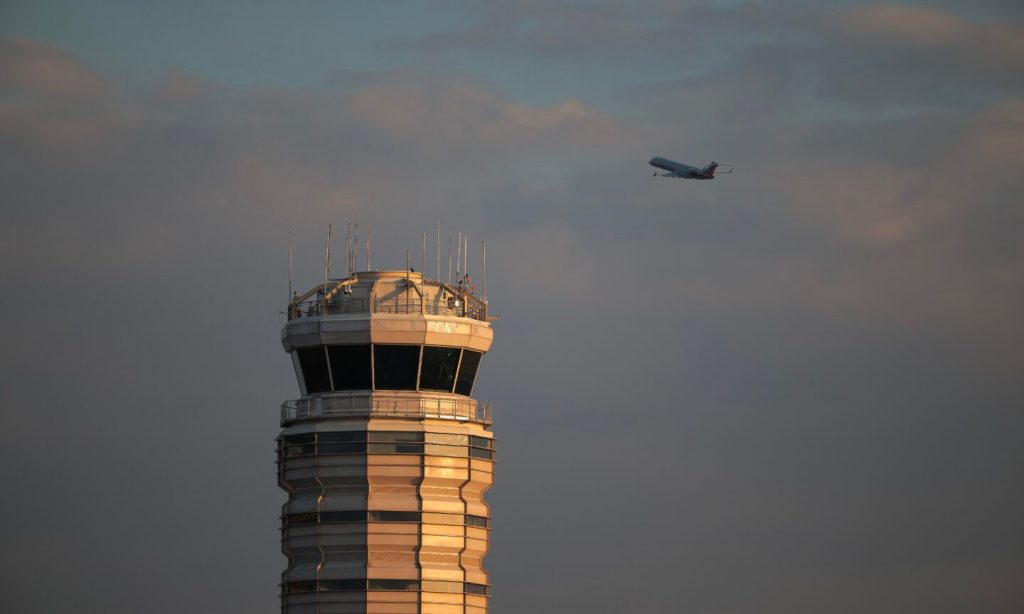Since the start of the government shutdown, thousands of flight delays have bottlenecked travel at major U.S. airports due, in no small part, to staffing shortages.
Air traffic controllers and other TSA workers are considered essential, which means they’ve been required to work since Oct. 1, when the shutdown began. Like other essential federal government workers, controllers are expected to clock in — without pay — until the shutdown ends.
It’s no secret that workers prefer to get paid for their labor, which has led to some calling out sick. Transportation Secretary Sean Duffy has threatened to fire the “problem children” workers who don’t show up — estimated to be around 10% of controllers.
Absences among air traffic controllers and TSA workers have strained the air travel system, slowing security lines, disrupting flight operations and causing delays and cancellations across the country. The ripple effects extend beyond airport delays, undermining business and tourism spending, and eroding consumer confidence.
As any air traveler knows, delays are common due to bad weather, mechanical issues and volume of flights. But disruptions have spiked since the start of the shutdown. On Oct. 19 alone, over 5,800 flights were delayed, with Southwest Airlines reporting the highest number of delays among all airlines and Chicago O’Hare International Airport experiencing the most disruptions of any U.S. airport.
Earlier this month, Duffy told Fox Business that normally worker absences cause 5% of delays — now they account for half.
As controller mass callouts increase and flight delays multiply, could the resulting disruption pressure lawmakers to finally end the shutdown? Recent history suggests that it might.
Controllers influenced the end of a previous shutdown
During the 35-day-long 2018-2019 government shutdown, hundreds of TSA officers called out sick, slowing airport security lines, while a handful of controller absences were enough to snarl airports nationwide.
Mass absences hit a fever pitch on Jan. 25, 2019 as delays all along the East Coast airports temporarily shut down travel at New York’s LaGuardia airport. The impact the workers’ absences had on air travel has widely been credited with pressuring lawmakers — and first-term President Donald Trump — to reach an agreement ending the shutdown.
The National Air Traffic Controllers Association (NATCA) has resisted the narrative that controllers wielded that much power over lawmakers during the previous shutdown.
In a press conference on Oct. 14, Nick Daniels, president of NATCA, said “Air traffic controllers are not responsible for starting a shutdown, and we’re not responsible for ending shutdowns. Only our elected officials are, and our elected officials need to end this shutdown today.”
The Trump administration is reportedly trying to find resources — hundreds of millions of dollars — to pay controllers during the shutdown and reduce the number of callouts.
The shutdown could worsen the air traffic controller shortage
Airports were already shortstaffed on controllers before the shutdown began. At the Oct. 14 NATCA press conference, Daniels said there are currently 10,800 certified controllers in the U.S., compared with a target of 14,633. “They work six days a week, 10 hours a day and they usually only have four days off in an entire month. Those are already heroic efforts,” Daniels said.
The controller shortage isn’t due to the federal employee purge following the start of President Donald Trump’s second administration — no air traffic controllers were removed at that time. The administration initially sent air traffic controllers buyout offers, but later rescinded them.
However, the Federal Aviation Administration (FAA) and Transportation Department did reportedly fire workers who support maintenance of air traffic control communications, according to a Feb. 15 statement by the Professional Aviation Safety Specialists, a union representing FAA employees.
Solving the controller shortage isn’t easy: The FAA hires new controllers two to three years in advance of expected headcount losses due to retirements, firings, transfers and other reasons. That hiring period allows for sufficient training time, according to the FAA report.
Events in recent years have presented training and hiring challenges, too: The FAA called out three factors that have slowed down controller hiring, including a hiring freeze beginning in Fiscal Year 2013, the pandemic and, notably, the government shutdown between 2018 and 2019.
The FAA has worked in recent years to close the gap on worker shortages: By the end of September 2024, the FAA announced it exceeded its goal of hiring 1,800 air traffic controllers — the largest number of hires in nearly a decade, it said. But, as Daniels’ comments illustrated, past hiring efforts haven’t been enough.
The shutdown is ultimately in lawmakers’ hands
Since the start of the shutdown, the Senate has voted a dozen times on short-term stopgaps. Every attempt — whether a vote on opposing measures or just the GOP stopgap — has been shot down. Democrats are seeking health care spending concessions, which Republicans reject. Both parties are standing firm with no sign of budging.
As time drags on without pay, controllers will likely continue to call out of work and travelers will bear the frustration of delays and even cancellations. But it’s likely a combination of pressure from multiple sources — not just air travel gridlock due to controller staffing shortages — that will push lawmakers toward a deal.
-
Thousands of other federal employees are being furloughed while other essential workers continue reporting without pay.
-
Social benefits including WIC and the Supplemental Nutrition Assistance Program (SNAP) will be halted beginning Nov. 1 until the shutdown ends.
-
Permitting and loan programs for small businesses are paused.
-
Federal courts around the country are running out of funds and are limiting operations.
-
Federal benefit application and processing services, including Social Security and Medicare, are operating at reduced levels.
The U.S. Treasury estimates the shutdown could cost the economy as much as $15 billion in lost GDP per week.
(Photo by Kayla Bartkowski/Getty Images News via Getty Images)

